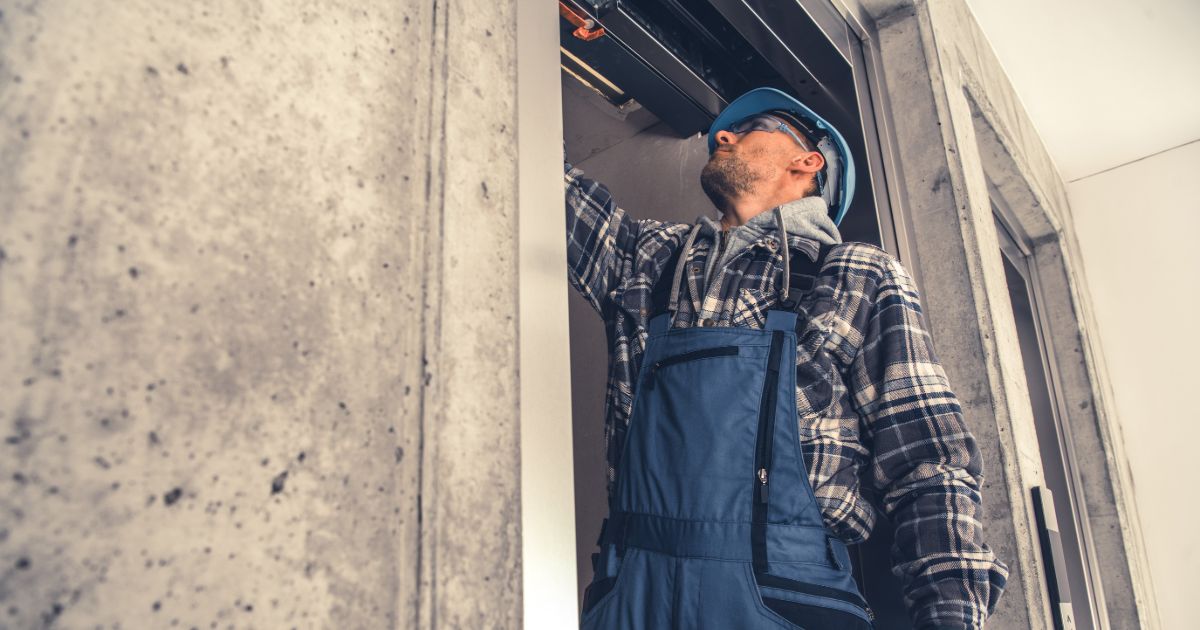When your elevator shows signs of wear, should you repair or replace it? Elevators are crucial for convenience and accessibility, so making the right decision impacts not only safety but also long-term costs.
Let’s break down when repair is enough and when replacement is the smarter choice.
Understanding Common Elevator Problems
Before deciding between repair or replacement, it’s essential to understand common issues elevators face:
- Mechanical Failures: Problems like worn-out gears, brake failures, or faulty motors.
- Electrical Issues: Malfunctions in the control panel, wiring, or safety circuits.
- Frequent Breakdowns: Increased frequency of service calls can be a red flag.
- Outdated Technology: Older elevators may lack modern safety features or efficiency.
Knowing these issues can help you assess the severity of the problem and determine the next steps.
When To Repair Your Elevator
Elevator repair is a cost-effective solution in many cases. Here are scenarios where repair makes sense:
1. The Issue Is Minor
If the problem involves a single component, like a broken door sensor or a faulty control button, repair is often sufficient. Minor issues can be fixed quickly and affordably by a professional technician.
2. The Elevator Is Relatively New
Replacement parts are typically easy to find for elevators under 10 years old. Repairs can extend the equipment’s lifespan without significant costs.
3. Budget Constraints
Repairs are usually less expensive than complete replacements. If your budget is tight, fixing the current issue might be the best short-term solution.
4. Routine Maintenance Was Followed
If you’ve kept up with regular maintenance, the system may only need a tune-up or small fixes to get back in working order.
Signs It’s Time for Elevator Replacement
In some cases, repairs may no longer be viable. Here are key indicators that replacement is the better option:
1. Frequent Breakdowns
If your elevator requires constant repairs, the cumulative costs can exceed the price of a new system. Frequent downtime can also frustrate tenants and visitors.
2. High Energy Costs
Older elevators tend to consume more energy than modern models. Replacing your elevator with an energy-efficient system can save money in the long run.
3. Obsolete Parts
Repairs become more expensive and less reliable when replacement parts are no longer available. Upgrading to a new system ensures better functionality and support.
4. Safety Concerns
Outdated elevators may not meet current safety codes. Replacing them improves safety and reduces liability risks.
5. Modernization Isn’t Enough
While modernization can update specific components, it won’t resolve underlying structural or mechanical issues. Complete replacement is better if the elevator’s core systems are failing.
Comparing Costs: Repair vs. Replacement
Cost is a significant factor in deciding between repair and replacement. Here’s how they compare:
- Repair Costs: These depend on the issue’s severity and the parts’ availability. Small repairs may cost a few hundred dollars, while major repairs can run into thousands.
- Replacement Costs: The price of a new elevator can vary depending on the building type and elevator model. However, new systems often come with warranties and lower maintenance costs.
When deciding, consider the total cost of ownership. While repairs may seem cheaper upfront, frequent fixes can add up over time.
Environmental Considerations
Replacing an elevator isn’t just a financial decision; it’s also an environmental one. Repairing an existing system reduces waste, making it the greener option. However, modern elevators are often more energy-efficient, which can lower your carbon footprint in the long term.
How to Make the Best Decision
To choose between repair and replacement, follow these steps:
- Assess the Problem: Get a professional inspection to identify the issue and its severity.
- Consider the Age of the Elevator: Older systems are more likely to benefit from replacement.
- Evaluate Long-Term Costs: Compare the costs of frequent repairs with the investment in a new elevator.
- Think About Usage Needs: High-traffic buildings may require a more reliable system than occasional-use elevators.
- Consult an Expert: Work with a trusted elevator service provider to explore your options.
Repair or Replace?
Deciding between elevator repair and replacement depends on your situation. Repairs are often sufficient for minor issues or newer systems. However, replacement is the wiser choice if your elevator is outdated, frequently breaks down, or poses safety risks.
Consult with one of our professionals at FIJI Elevator to weigh the costs and benefits, ensuring your elevator remains safe and functional for years to come.

